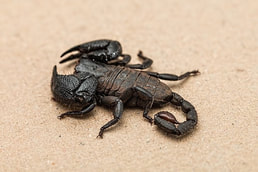
Spiders are versatile creatures which have become established in nearly every land habitat. They are arthropods, meaning that they are invertebrate animals which have exoskeletons, segmented bodies, and paired jointed appendages. Unlike other arthropods, mites, ticks, scorpions, and spiders are arachnids. Arachnids have two body segments, eight legs, and no antennae.
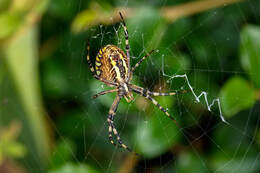
Although not all spiders spin webs, many build them to catch insects for food. Webs allow the arachnids to trap prey without having to use energy hunting. That energy savings is somewhat offset, however, because web construction requires energy. And webs need to be reconstructed regularly because the silk becomes less sticky and inefficient at capturing prey over time. Spiders consume their own web and then rebuild. This way they recycle the silk proteins.
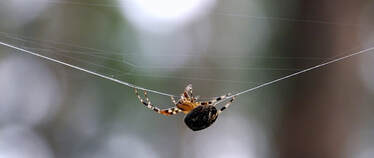
Spiders extrude silk from spinnerets which are connected to specialized glands. The glands can produce different types of threads for different purposes, such as for safety line, for trapping prey or for wrapping it. Some spiders can produce up to eight different silks during their lifetime. Spider silk provides a combination of lightness, strength, and elasticity that is superior to that of synthetic materials. Researchers have even inserted spider silk genes into mammals and plants to see if they can be used as silk factories!
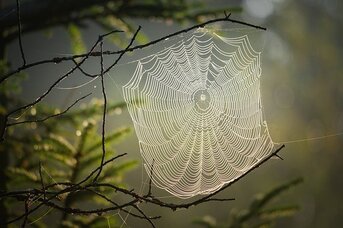
Spider webs vary widely in size, shape, and the amount of sticky thread used. Different web structures include orb webs, funnel webs, and cobwebs.
Have your students make an orb web and teach them about spiders! You can do it with yarn, glue, wax paper, tape, a shallow bowl, and a web template or paper/pencil/ruler to make your own. Make a template spider web
You can make a template for your spider web by drawing a straight line down the center of a piece of paper. Then you draw a second line that is perpendicular to the first line. The lines will cross in the middle of the paper, creating 4 squares. Next, bisect each of the squares by drawing two more lines crossing through the existing center point. That will create 8 triangles. The lines that now radiate out from the center point are called anchor silks.
You can create structural silks starting from the middle, radiating away from the center point. Each progressive structural silk will form octagons of increasing size as they move to the exterior part of the web. You begin by drawing the structural silk lines close to the center point. Add as many as you like, but for better stability, the distance spanned from one anchor silk to the next should not be more than 4 inches. You can use the template you just made following the directions above, or download my spider web activity and use the template I provide. Build the web!CHECK OUT MY TIKTOK VIDEO DEMONSTRATION BELOW, AND THEN READ ON FOR MORE DETAILS!
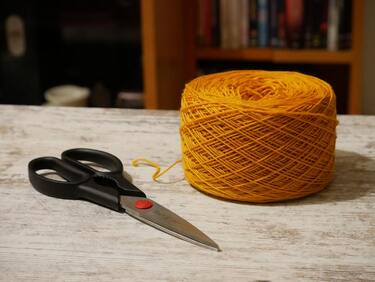
Once you have a template, tape wax paper over it.
Next you will need to cut pieces of yarn and glue them onto the wax paper, following the lines of the web template. If you place some glue in a bowl you can "dunk" each piece of yarn in it and then “pinch off” the excess by running two fingers along it. Start with gluing down the anchor silk pieces, then follow with the structural silks. You can experiment with gluing the structural silks individually or using a longer piece of yarn to do a bunch of structural silks in a row. Once all the yarn has been placed, allow the web 24 hours to dry. Once it is dry, gently peel the glued yarn from the wax paper, trim off any excess dried glue and you have a spider web! Test Student knowledge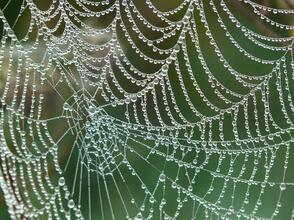
Ask students to explain what an arthropod is. Have them list other organisms, besides spiders, that are arthropods. Query them about the webs. Why do spiders build them? What nutrient is important for web silk? Why are researchers interested in spider silk?
Make Halloween educational!
0 Comments
Leave a Reply. |
AuthorGertrude Katz has spent over 30 years teaching K-12 public school students all major subjects. She has taught biology and education at the college level. The majority of her career has been spent instructing biology at the secondary level. Categories
All
|
 RSS Feed
RSS Feed